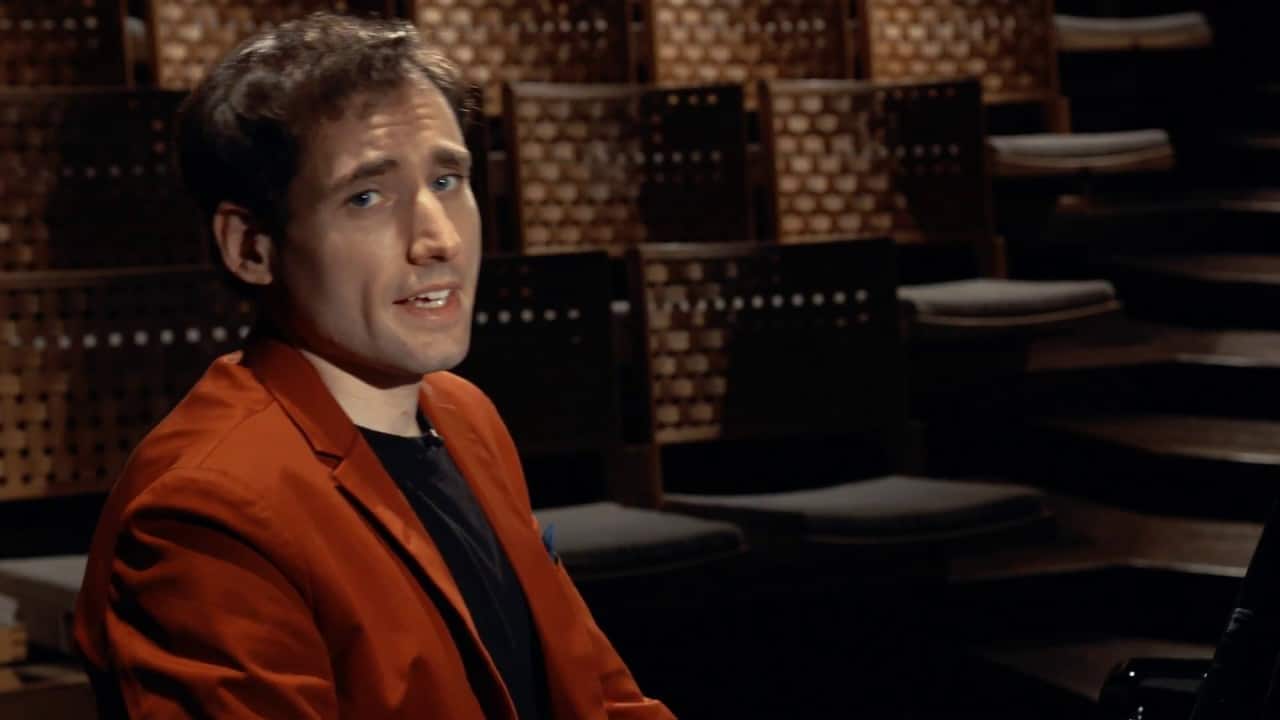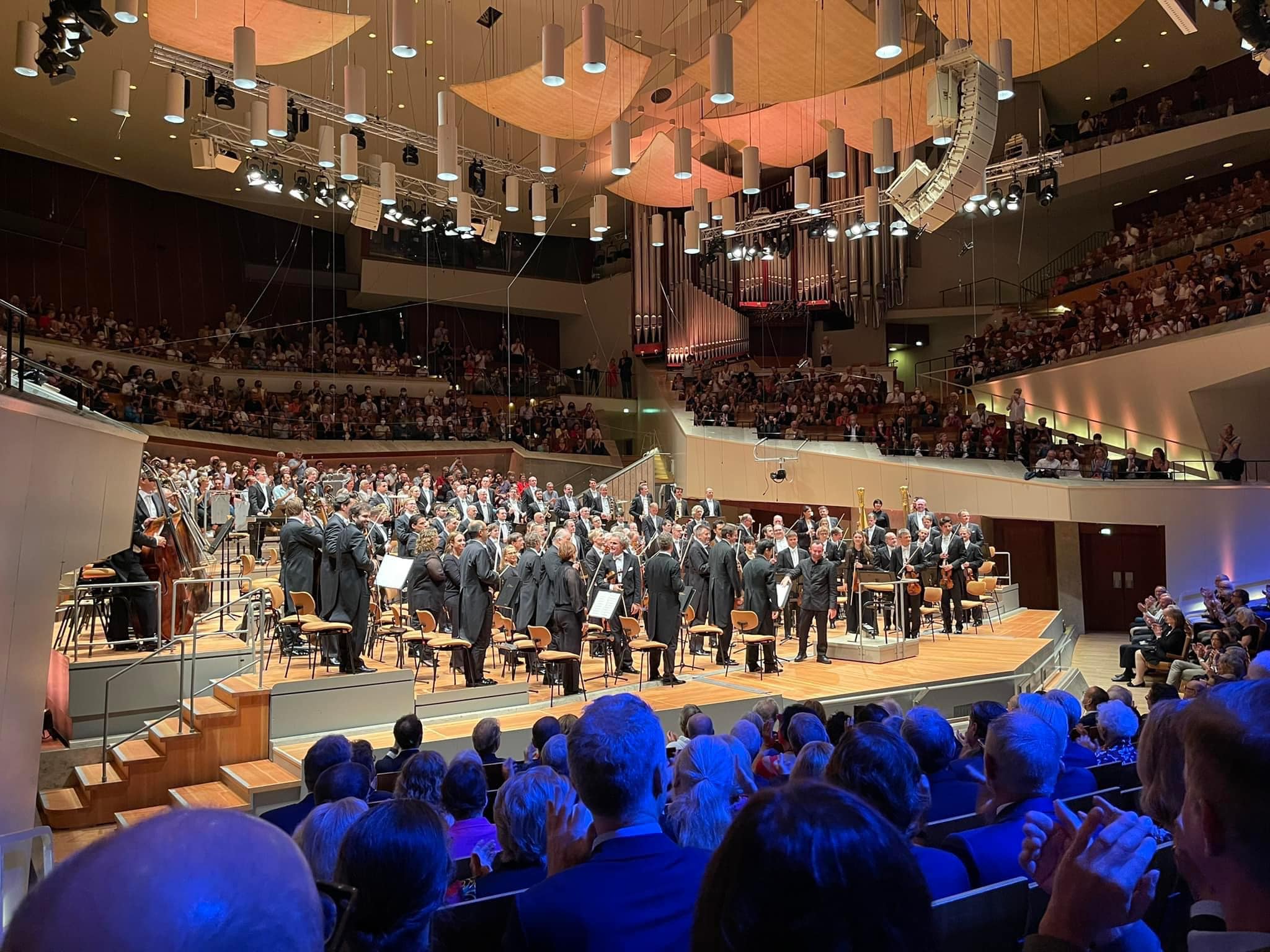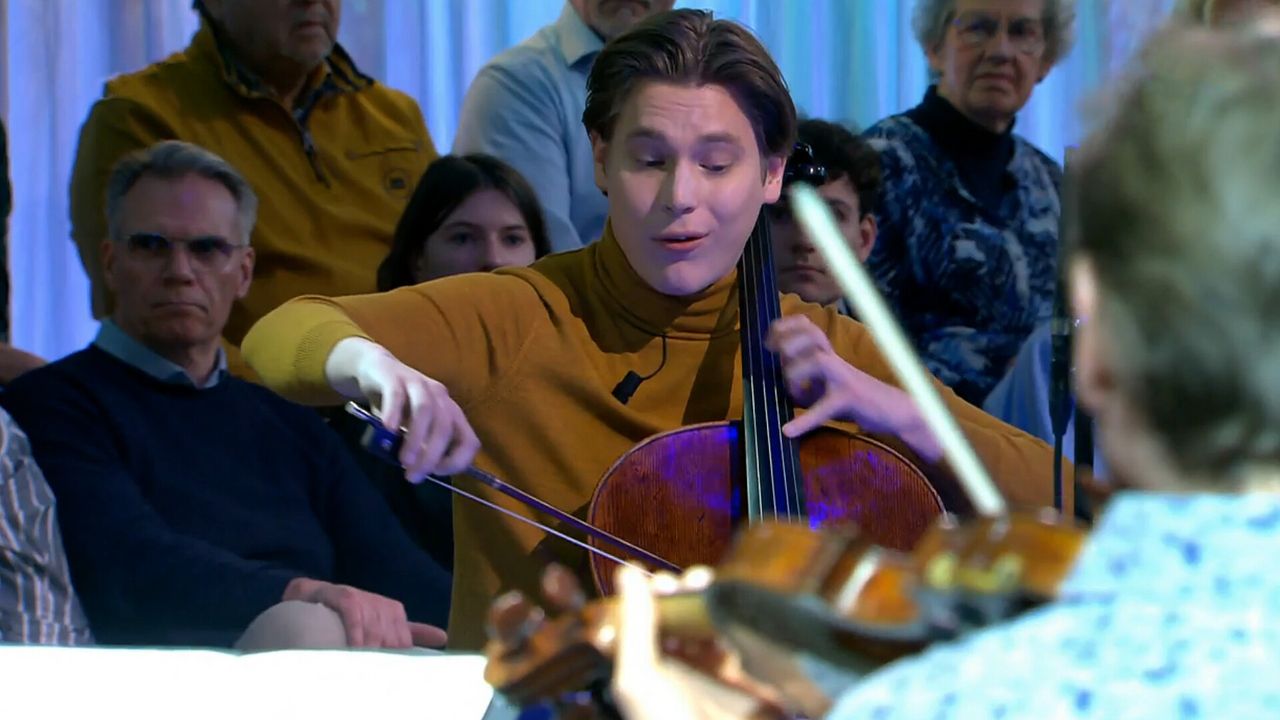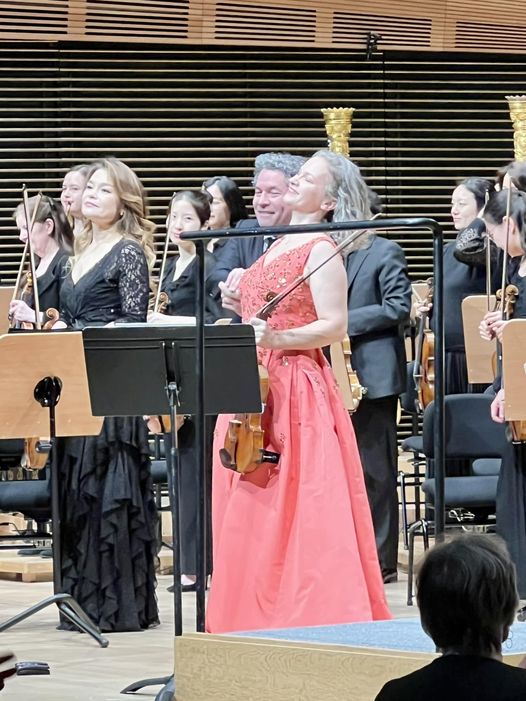Does anyone still play a Steinway?
mainIn the new Lebrecht Album of the Week, I observe that Daniil Trifonov, Boris Giltburg and other leaders of the new generation of pianists seem to be shifting to the edgier Fazioli.
What’s going on?
Read here.
And here.







True artists only play on a C. Bechstein. Accept no substitutes.
Thank God I’m no “true artist” then and may keep my Grotrian-Steinweg.
Grotrian-Steinweg? Barbarian!
Better stick to filing.
I was once told Bechstein only got it all right (including pedals) in their 1911 model!
Hilarious.
It’s what you own, no doubt.
Maybe, but the Bechstein family was a major financial contributor to Adolph, even when it knew the worst.
Bechstein did have a complicated history. But it’s under new management, and the instruments they make are still second to none.
Comedy gold.
The headline is a provocative, overstated question. Of course the Steinway is still the dominant brand. Hearing other brands in concert and recordings is healthy and arguably overdue.
Am I right to think that Steinway cornered the market after WWII? Many pre-war piano recordings are also made in other instruments. For example, Madeleine de Valmalète’s wonderful 1940’s recordings recently posted on Slipped Disc were on a Gaveau. Backhaus played on a Bösendorfer. The list goes on and on and is probably much bigger than, say, any postwar exceptions I can think of, like Yamaha (Richter) or Baldwin (Bolet, Wild), or Bösendorfer (Gulda, Badura-Skoda).
And don’t forget that Hamburg Steinways and New York Steinways are different in quality. Personally, I’d take a Bösendorfer any day over and above any other maker.
Indeed, Hamburg and NY Steinways differ in sound. But I would also add that it’s not like on size fits all, or one is necessarily better than the other. They have different pros and cons. In my desert island I’d like to have a studio with 5-6 different brands, along with a few fortepianos and enjoy the variety.
And if you were to in fact “take it” what would you do with it, provided you could get it up to the 15th floor of your Soviet Block House apartment? Pay someone else to play it?
I worked with Wild when he had no choice but perform on a Steinway (and how marvellously he performed!) Prior to rehearsing, he had the piano tuner take out the action and then use a steam iron on the felts. I know little about Baldwin pianos. Would this have made the Steinway ‘sound’ a little more like that of a Baldwin?
Fascinating story! I heard Wild (and loved his performances), mostly in Europe, so on Steinways, and wished he’d always played on them as they suited his sound much better (imo), than the “crunchy” Baldwin noise! His complete Rach Concertos & PagRap (RPO/Horenstein) are certainly recorded on Steinway, (fantastic sound!), whereas Scharwenka1 (Boston/Leinsdorf), even tho stunningly played, sounds fairly ghastly on his favored Ballswin. There’s no accounting for taste, sometimes!
“Does anyone still play a Steinway?”
Yes, plenty. For example:
Stephen Hough:
Q: Do you have any personal feelings or leaning toward either of those (Fazioli and Stuart)?
A: I don’t find any of these actually rival the Steinway. Although I find the Stuart is the most interesting because it’s the most different from a Steinway. Many of the other pianos around are trying to copy Steinway, and do similar kinds of things. Whereas the Stuart is actually a completely different design, and I actually find that interesting. In fact, they’re quite wonderful. I’ve played them a number of times in Australia.
Q: Have you tried the Fazioli?
A: I owned one. I bought one about three years ago, but I’ve since sold it. I think the Fazioli is an extraordinarily well-made instrument. But I just don’t find, for myself, that its sound world is very interesting. I find it almost too clean, almost too clinical, and too perfect. They have this design feature where the duplex scaling is tuned exactly an octave higher than the note, which gives each note more clarity, but in some ways mere clarity isn’t always a virtue if you want to create color, with overtones and half lights. There are pianists who love Faziolis, and I’m thrilled that there are piano makers around who are prepared to experiment and make absolutely first-rate instruments like Fazioli and Stuart.
Yuja Wang:
Q: Have you had much experience with the Fazioli piano?
A: I did try one in Calgary where they have a shop. It was nice, but I felt that it was too glassy and clear for some repertoire, and most of the time I felt like I was walking on eggshells. The action is light.
Steven Osborne:
Q: Are you familiar with Fazioli?
A: Yes, but I don’t think I’ve come across the best of them. To be honest, I’m not really wrapped up in the whole question of pianos. You can get good pia- nos, and bad pianos, and sometimes great pianos. But I think for the audience it is not enormously significant. As an audience member, I think you relate everything to a certain average level of volume and brightness in the sound that gets established quite quickly, and after that it’s much more about the performer’s musical ideas than the precise sound of the instrument. You can basically get your musical ideas across on most instruments. Some composers are more delicate than others in this respect; I find the difference between a good and great piano for Schubert is very significant, for example.
Yevgeny Sudbin:
A: Yes, but I do prefer Steinway. I find that the New York Steinway differs a lot from the Hamburg Steinway. The Hamburg Steinways are more consistent. Often I find it a bit tricky to play the New York Steinways because the range is slightly muffled and sometimes there is a lack of color. The two instru- ments differ quite a lot. A great New York Steinway can be incredible and much better than a Hamburg Steinway, but they are rare. The New York ones are generally more inconsistent and sometimes let me down in color because they need to cut through with an orchestra and still have the right colors. With the New York Steinway it can be very tough. The Hamburg instrument has more beautiful colors in the top region, and, in general, has more differentiation or a little more variety in color throughout the whole range. They are both wonderful instruments and for me are on a completely separate level, of course, from anything else.
All of the above are excerpts from this book: https://books.google.com/books/about/At_the_Piano.html?id=Bs_s0jQubVoC
The book was published in 2012, but as far as I know none of the above has since shown a preference for Fazioli. For my own ears, Stephen Hough’s description of the sound of a Fazioli is spot on.
I forgot to include the question asked of Sudbin. It was: “Do you know the Italian Fazioli?”
Remember when Stephen Hough penned this article? https://www.independent.co.uk/voices/a-tone-too-subtle-for-modern-ears-stephen-hough-mourns-the-fall-of-bechstein-piano-makers-to-1459102.html
As a concertgoer there seem to be plenty of Steinways around. It’s good though that there is choice.
In my experience, a Fazioli sounds like a Yamaha on steroids: too bright and glassy. I prefer Steinways from the 1920s and 1930s, which have a lovely glow and richness to their sound when voiced and regulated properly. Another factor has to be considered: Haydn and Mozart as well as some French repertoire can sound muddy on a Steinway and might go best on an instrument with more transparency of sound like a Bösendorfer. I can’t abide the sound of a “fortepiano,” though.
Yuja Wang: “The [Fazioli] action is light.” Actually Renner makes the (interchangeable) actions for Fazioli, as well as for a number of other top brands. Under the hood many a famous small truck maker has placed a General Motors engine.
Svjatoslav Richter had said that all he cared for when trying a new piano was good pianissimo. (I remember this from portrait Montsaingeon made.)
When Fazioli pianos were first becoming famous, sometime in the 1980’s, I played on the F-308 in a few concerts and did a couple of CD recordings on them as well. I was completely overwhelmed by my first encounters with the instrument, some of which were actually much smaller than the Steinway “D” (actually more comparable to the Steinway “O” model) but made me feel like I was playing on a much larger and therefore richer, more colorful instrument. Some of the negative comments seen above about Fazioli’s “glassy” sound may stem from the fact that most pianists are simply used to playing their instrument in a certain way and expect a certain kind of sound to result when played that same way, but each brand of instrument has its own character (over and above the individual character each single instrument has). One should try to find the advantages available and adjust the approach to the instrument accordingly.
In the meantime, I have played mostly Steinway grands in concert, but also had opportunities to perform on Bösendorfer Imperials as well as Bechstein and Yamaha concert grands. Some repertoire sounds best on one brand, other repertoire on another. I’m sure every pianist has their favorites, but if a piano is properly tuned and cared for and is relatively even in timbre throughout the scale, I think it should be possible to make beautiful music on just about any of these (exceptions to that happen, but I won’t name names here).
Since I am not (and never was) exclusively a touring pianist, those who are fortunate enough (???) to earn their livelihood by playing concerts are wise to stick with whatever model serves them the best. It’s unfortunate to have to be at the mercy of any one particular brand, however. I feel like there is considerably more freedom of choice these days, and that is certainly a positive thing. I enjoy hearing Daniil Trifonov and Yuja Wang immensely regardless of whatever instrument they happen to be playing.
Angela Hewitt has been playing Bach on her Fazioli for quite some time now. What she is using next week here in Ottawa for her Bach Odyssey Vlll I do not know, but maybe I will find out.
Having played many different pianos for several decades, I have come up with this conclusion: there is a piano for everybody, based on how they hear the music in their head before producing the sound, or based on the repertoire and where it is being played or recorded. Some music by composers like Bach through late 1880s can sound remarkably well on instruments for which the music was not composed. Steinways of the late 1800s suit late Brahms well, for instance. Overall, personally, and it is always personal when it comes to pianos, is that the Steinway, in general, allows me to create the widest range of color, dynamics, pedal blending and long singing lines. A Steinway voices well can also be a great teacher, allowing us to create sound on the spot based on the sound the piano can deliver. The room makes a huge difference. A dry sound can be good for certain composers while a darker ‘wet’ sound suits others. I have a soft spot for gorgeous Steinways, but when I play other pianos (not in performance or recording) I enjoy finding the good points of the instrument and enhancing them, rather than bring out the lesser qualities. Boils down to personal preference based on the various factors mentioned above.
I attended Stephen Hough’s Recital at the Snape Proms in August 2017 in which he played a superbly constructed programme of wonderful contrasts (Debussy: Claire de Lune; Images Book II; Schumann: Fantasie; Debussy: La terrasse des audiences; Images Book I; Beethoven: Appassionata). My wife and I were seated about two-thirds up in the hall, and the lighting was fairly crepuscular, so I couldn’t make out the manufacturer’s name on the side of the instrument. At the end of the first half, I turned to my wife and noted that this must be the best-regulated and most finely-tuned Model-D Steinway that we’d ever heard! The technician came on at the interval and started working on the instrument, so I went down to the platform and was astonished to find an extremely polite Japanese gentlemen tuning a Yamaha piano (CFX Concert Grand). We were both amused by my misapprehension, and he was clearly delighted by my vociferous praise for this superb instrument which, I understood, had been transported from London specifically for this concert.
I was completely entranced, indeed overwhelmed, by the utterly ravishing sounds from the Debussy pieces, the gasp-inducing pianissimi at both ends of the keyboard, the scintillating glitter at the top (especially that extra ping to the top octave) and the great, deep well of warmth at the bottom. The complete euphony of the sound across the instrument was amazing, and I would have to say that in 55 years of concert-going, this piano is probably the finest Concert Grand that I have ever heard, and I’ve heard many, many Steinways of varying virtue and a few super Faziolis (with Louis Lortie in Liszt and Angela Hewitt in Bach). But this Yamaha, this really was perfection, and it is this instrument with which Stephen Hough chose to record his latest Debussy disc.
You give a heartwarming account, but i’m still astonished; all my experiences have been the opposite. The most recent was at a Wigmore recital, (Skriabin, Szymanowski, Debussy, Hindemith), where the cramped ugly sound anywhere above mezzoforte was a real handicap. A tuner came and worked hard on it during the interval, but the damage had been done to our ears. Only on leaving the hall did we notice the piano had been a Yamaha, a really stupid choice to sabotage one’s recital! Similarly, Richter’s marvellous original touch and tone became harder, harsher and more “cramped” after years of using Yamahas; at one of his very last appearances, the sound was barely bearable!
At its best, a Yamaha may give an efficient performance, technically, (touch, note repetition, etc), and in terms of pure sound, but lacks any musical “spirit”- impossible for the warmer Romantics, for example; Schubert, Schumann, Brahms…. impossible on Yamaha!
The Lebrecht album of the week may well please him
but to this listener it leaves much to be desired.
What do you mean by “edgier” Fazioli?
No one’s mentioned Blüthner, which I find surprising, although Mikhail Pletnev and Artur Pizarro have both made splendid recordings with Model 1s…
There are “wine snobs”-now there are “piano snobs”??
No, there are pianists who are educated about instruments. To seek and demand quality is not to be a snob.
I find myself increasingly drawn to the Yamaha CFX, and a lot of folks at the Chopin competition would seem to agree…
https://usa.yamaha.com/news_events/2015/20151112_yamaha_cfx_grand_most_popular_piano_at_international_chopin_competition_us.html
If I remember correctly, when I worked with Andre Watts, he was a Yamaha artist. In Asia he would always have a swarm of Yamaha technicians around him.
And didn’t Richter play on Yamaha pianos – certainly at the end of his career?
André Watts was a Baldwin artist, at least in the 1970’s when I heard him live a few times. In Europe, he performed on Bechstein (which owned Baldwin, or Baldwin owned, at the time) as did Jorge Bolet.
Maybe he switched to Yamaha in the meantime, or else he performed on Yamaha only in Asian venues?
And yes, Richter preferred playing Yamaha in his later years.
Very difficult to judge a piano .Each instrument is a total unique world.I have a Steinway D that every day is changing a little bit the sound depending on God knows what
Today is snowing and my piano sounds divine!
My own Steinway D was previously Sir Clifford Curzon’s private (home) piano. He was particularly finicky about the pianos he played on publicly – Bob Glazebrook, chief tuner/technician at Steinways, London at the time recounted Curzon phoning him at 3.00am anxious about the piano for his recital the following day! It’s a 1965 Hamburg Model D which I’ve owned for 29 years – now ageing gracefully and I find myself loathe to consider anything other than essential work (superbly accomplished by Jeff Shackell) for fear of altering its unique character. So new hammers, yes but more structural changes such as restring, no. So in answer to Norman’s question – yes I do play a Steinway. But his question is more of a provocation (perish the thought) and raises a number of pertinent points which I don’t feel wholly qualified to answer. To my mind however pianos were more characterful (so were the pianists) in the 1920s/30s and instruments today, designed for greater projection in larger halls seem to have acquired an anonymity – relatively colourless, strident and with remarkable inconsistency from one instrument to another. Perhaps the quality of timber, leather and felt is not as it was, nor the apprenticeship schemes as comprehensive? The old repair skills are being streamlined and replaced by drop-in parts/action replacement (much easier). Good, bad and indifferent pianos by all manufacturers for sure and perhaps Stephen Hough is right is urging us to fret less about the instrument and concentrate more on the performance. Some of the greatest performances I have heard have been by pianists who transcend the limitations of the instrument. Yamaha’s relatively recent acquisition of Bösendorfer has resulted in some of the most extraordinarily beautiful instruments I’ve ever encountered. I also played a 1985 Steinway D (last of ivory key instruments) recently and was reassured by the thought that, at their best these instruments are unsurpassed. Fazioli? I’m sure there are great ones out there, but I’ve yet to encounter one. Yamaha CFX – another beauty (we use it for the Dudley International Piano Competition: http://www.dipc.org.uk)
A growing number of classical music enthusiasts, concert halls, universities, artists, managers and media critics alike have been clamoring for a fresh, new sound on the concert stage. Having one dominant instrument limits the audience’s experience with each manufacturer’s distinctive approach to sound.
Personally, I am quite partial to the sound of the Yamaha CFX and Bösendorfer 280 VC, particularly in light of the artists who have gravitated to these magnificent instruments in recent years.
For example, pianists recently selecting the Bösendorfer 280 VC include Sir Andras Schiff (on tour throughout the United States and Europe), Danil Trifonov and Louis Lortie.
The Yamaha CFX, known for its powerful sound projection, balanced with singing legato, delicate pianissimos and a rich palette of tonal colors, enables performances of unmatched beauty and individuality. The CFX piano has been the preferred instrument by pianists at major international piano competitions, including most recently the Hamamatsu Piano Competition in Japan, and the Chopin Competition in Warsaw.
Numerous Recent recordings have been made on the Yamaha CFX including those by Emanuel Ax, Stephen Hough, Anne-Marie McDermott and Jean-Efflam Bavouzet. and Pierre-Laurent Aimard.
Pianists who have performed on the Yamaha CFX of late include Emanuel Ax, Stephen Hough, Jean-Efflam Bavouzet, Pierre-Laurent Aimard, Alexadre Tharaud, Angela Hewitt and Cédric Tiberghien.
The Yamaha CFX is the piano of choice for a new and forward-thinking generation of pianists, which includes the International Contemporary Ensemble, Francesco Tristano, Yarn/Wire, Timo Andres, Conor Hanick, Peter Dugan, Vicky Chow, Gabriel Kahane and Lara Downes.
These artists fully appreciate the sensational difference the CFX makes in their performances. It stands on its own as one of the best pianos in the world, and is certainly making an indelible mark on the piano world. Most important, I think it addresses the mono culture that is Steinway, and, along with Bosendorfer, offers concertgoers two delicious new flavors on the classical music stage.
Wow! What a well-disguised puff for Yamaha! I almost should have demanded a refund for a recent, (last november), rectal in Wigbore Hall by the said Cédric Tiberghien, who managed to sabotage his programme with a CFX…cramped, ugly, limited sound which didn’t improve even after frantic, intense tuning and technical work during the interval. A very negative sign of the times that an “easy-to-play” crowd pleaser, (Yam), should be preferred to a true musical instrument.
Richter’s legendary original touch was destroyed in his later years by this perverse decision.
However, the Bösendorfer VC 280 is a marvel. I”m astonished that anyone can mention it in the same breath, (or blog comment!).